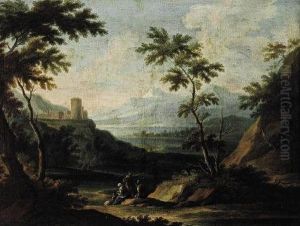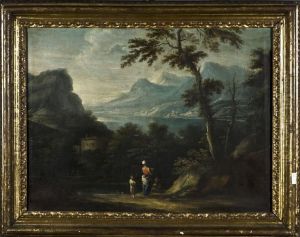Carlo Filippo Brambilla Paintings
Carlo Filippo Brambilla was an Italian painter and engraver born in 1745 in Milan, a city that during his lifetime was a vibrant center for the arts and culture in Italy. He is often associated with the Neo-classical movement, a style that sought to revive the simplicity and elegance of ancient Greek and Roman art. Brambilla's work, however, also exhibits characteristics of the Rococo style, known for its elaborate ornamentation and playful themes, which was popular in the early part of his career.
Brambilla was educated in the Brera Academy, one of the most prestigious art schools in Italy, where he was influenced by the teachings of Giuseppe Piermarini and Giulio Traballesi, both prominent figures in the Italian art scene of the 18th century. His education and early exposure to the thriving artistic atmosphere of Milan played a crucial role in shaping his artistic style and philosophy.
Throughout his career, Brambilla was known for his meticulous engravings and paintings, which often depicted historical and mythological scenes with a remarkable attention to detail. His ability to blend the grandeur and simplicity of Neo-classicism with the intricate details characteristic of the Rococo style made his work highly sought after by collectors and art patrons of his time.
Despite his success, Carlo Filippo Brambilla remains a somewhat elusive figure in art history, with much of his life and work deserving further study. He continued to work and teach in Milan until his death in 1834, leaving behind a legacy that, while not as widely recognized as some of his contemporaries, contributed significantly to the artistic heritage of Italy. His works can be found in various collections and museums across Europe, serving as a testament to his skill and artistic vision.

